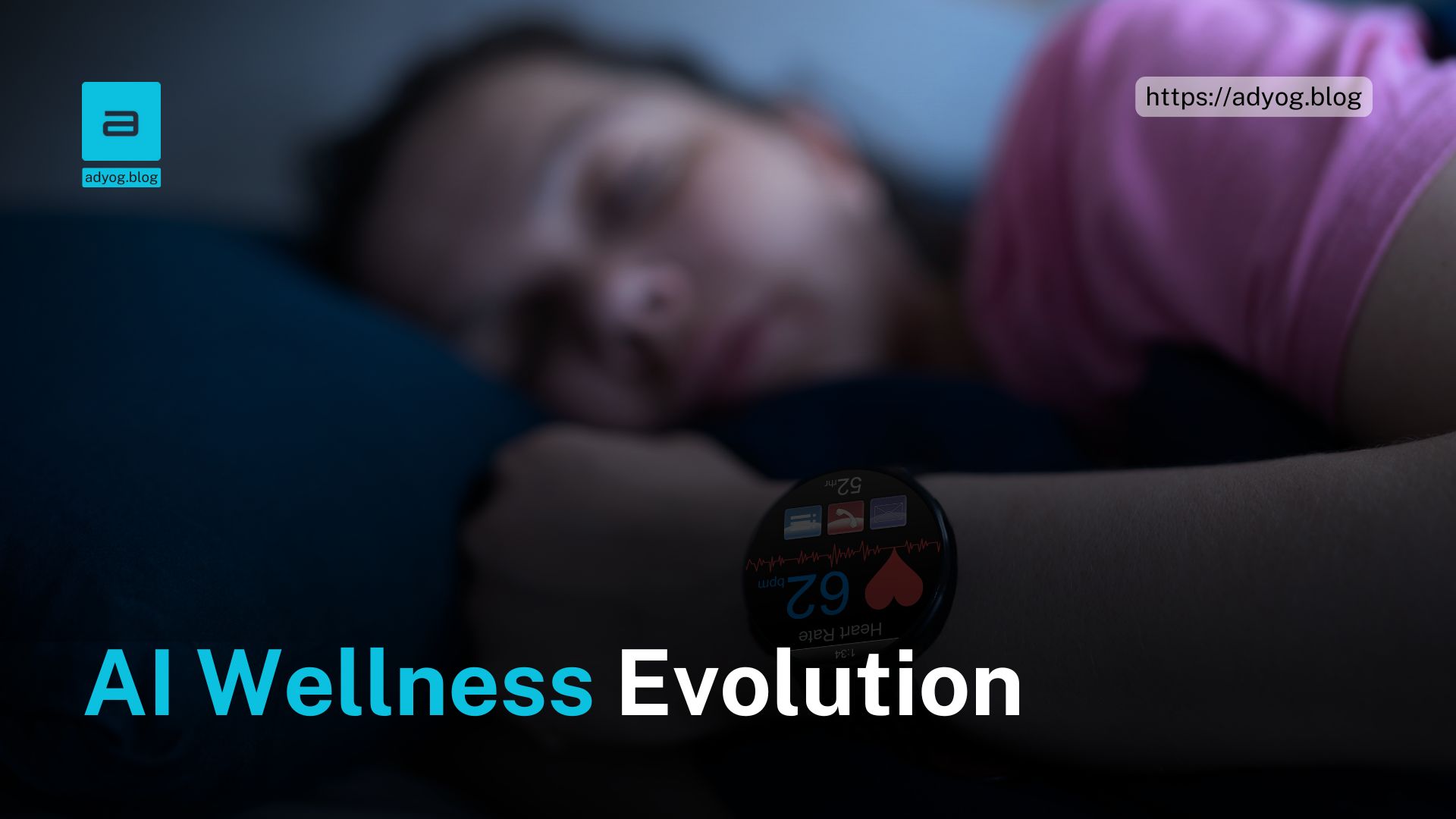Imagine a future where your wearable device doesn’t just track your steps but predicts health challenges weeks before they surface. This future is now a reality, as wearable AI devices, like Apple Watches and Fitbit, are pioneering real-time health monitoring to revolutionize disease management.
Recent studies have shown these devices’ promise in diagnosing and predicting inflammatory bowel disease (IBD) flares weeks in advance. With AI-driven insights, these devices are reshaping how we approach chronic disease management, offering hope for millions worldwide.
A Breakthrough in Health Monitoring
How It Works
Wearable AI devices collect and analyze data to identify “digital biomarkers”—subtle physiological changes indicating health conditions. These biomarkers are extracted from advanced sensors such as:
- Accelerometers and Gyroscopes: Detect movement patterns and physical activity.
- Optical Heart Rate Sensors: Monitor heart rate variability (HRV) and blood oxygen levels.
- Environmental Sensors: Measure surrounding conditions like temperature and light exposure.
AI algorithms—including machine learning models like support vector machines (SVMs), deep learning models like convolutional neural networks (CNNs), and recurrent neural networks (RNNs)—analyze these vast data streams in real-time. For IBD analysis, RNNs are particularly effective as they excel in processing sequential data, capturing patterns over time to identify inflammation markers early. For example, in IBD, these algorithms detect subtle changes in physiological markers such as heart rate patterns and variability, indicating inflammation long before symptoms manifest.
Case Study: Predicting IBD Flares
A groundbreaking study led by Dr. Robert Hurtin at Mount Sinai Hospital involved 309 volunteers with ulcerative colitis or Crohn’s disease. Participants wore devices like Apple Watches and provided regular symptom surveys, blood, and stool samples. The findings were remarkable:
- Wearable data predicted inflammation up to seven weeks before a symptomatic flare.
This early detection empowers patients and physicians to act preemptively, adjusting treatments and avoiding severe health disruptions.
Expanding the Horizon: Beyond IBD
While IBD is a focal point, wearable AI has broader applications:
Cardiology: Detecting Arrhythmias or Predicting Cardiac Events through HRV Analysis
Wearable devices like smartwatches utilize HRV (Heart Rate Variability) analysis to monitor arrhythmias and predict potential cardiac events. A study published in the European Heart Journal demonstrated the effectiveness of HRV features in screening for atrial fibrillation, providing critical insights for early intervention.
Citation: European Heart Journal
Pulmonology: Monitoring Asthma or COPD Exacerbations Using Oxygen Saturation Trends
Continuous monitoring of blood oxygen levels via wearable devices can help detect exacerbations of asthma or chronic obstructive pulmonary disease (COPD). Research in NPJ Digital Medicine highlighted how wearable pulse oximetry sensors can predict impending exacerbations, allowing timely therapeutic adjustments.
Citation: NPJ Digital Medicine
Mental Health: Identifying Early Signs of Depression or Anxiety Through Sleep and Activity Patterns
Wearables equipped with sleep trackers and motion sensors can identify behavioral changes associated with mental health conditions. A Journal of Medical Internet Research study demonstrated how data from wearable devices could detect early signs of depression and anxiety through sleep quality and activity patterns.
Citation: Journal of Medical Internet Research
Oncology: Tracking Chemotherapy Side Effects and Recovery Metrics
Wearables play a pivotal role in oncology by tracking vital metrics and physical activity levels in cancer patients undergoing treatment. Research in Frontiers in Oncology discussed how wearables can monitor patient recovery and chemotherapy side effects, contributing to personalized care.
Citation: Frontiers in Oncology
Ethical Considerations and Challenges
Data Bias and Algorithmic Fairness
AI algorithms must be trained on diverse datasets to ensure fair outcomes for all demographics. A lack of representation can result in biased predictions, particularly for underrepresented populations. Additionally, the phenomenon of ‘filter bubbles‘—where algorithms reinforce existing biases by over-relying on limited data sources—poses a significant risk. Addressing this requires both transparency in AI processes and guidelines for algorithmic equity.
Privacy and Informed Consent
Wearables collect sensitive health data. Ensuring users understand how their data is collected, used, and shared is critical. Transparent consent processes and robust encryption mechanisms are essential. Regulatory bodies, such as healthcare authorities, must establish standardized guidelines for data usage to safeguard patient rights while enabling innovation.
Device Limitations
- Battery Life: Many wearables require frequent charging, which can disrupt continuous monitoring.
- Comfort and Design: Devices must balance functionality with wearability to encourage consistent use.
- Data Overload: Excessive alerts can lead to “alarm fatigue,” causing users to ignore critical warnings.
Data Bias and Algorithmic Fairness
AI algorithms must be trained on diverse datasets to ensure fair outcomes for all demographics. A lack of representation can result in biased predictions, particularly for underrepresented populations.
Privacy and Informed Consent
Wearables collect sensitive health data. Ensuring users understand how their data is collected, used, and shared is critical. Transparent consent processes and robust encryption mechanisms are essential.
Future Directions: The Next Frontier
The wearable AI landscape is poised for transformative advancements, opening doors to groundbreaking innovations in healthcare:
Predictive Models for Complex Diseases
Wearable devices hold the potential to revolutionize personalized medicine by tailoring treatments to individual genetic profiles and lifestyle data. For instance, AI-powered systems could analyze genetic markers and correlate them with real-time health data to customize interventions for diseases like Alzheimer’s, diabetes, or cancer. A recent study in Nature Medicine demonstrated the feasibility of integrating wearable device data with genetic profiles to predict and manage chronic diseases effectively. [Source]
Integration with AR/VR
Imagine wearable devices paired with augmented or virtual reality (AR/VR) tools to provide immersive health visualizations. For example, patients could view real-time overlays of their vital signs or trends through AR glasses, enhancing engagement and understanding. Research published in JMIR Serious Games explored how AR/VR technologies combined with wearable sensors improve patient outcomes by delivering actionable health insights in an intuitive format. [Source]
Telemedicine Synergy
AI-enabled wearables are set to seamlessly integrate with telemedicine platforms, enabling remote diagnostics, virtual care, and even real-time treatment adjustments. A study in The Lancet Digital Health highlighted the role of wearable devices in improving telemedicine capabilities by providing continuous patient monitoring and facilitating real-time clinical decision-making. [Source]
Drug Development Acceleration
AI in wearables could accelerate drug discovery and development by providing researchers with precise, continuous data on patient responses during clinical trials. This can enhance the evaluation of drug efficacy and safety. A paper in NPJ Digital Medicine discussed how wearable data has been instrumental in optimizing clinical trials, reducing time-to-market for new therapeutics, and improving safety monitoring. [Source]
A Personal Touch: Why This Matters
Take Will Studholm’s story. At 58, a routine abdominal CT scan unexpectedly revealed a collapsed vertebra, leading to an osteoporosis diagnosis. This serendipitous finding underscores the transformative potential of wearable AI devices, where continuous monitoring and advanced analytics could similarly uncover hidden health risks, empowering timely interventions and personalized care. This accidental discovery—powered by AI—prevented further complications. His experience underscores the potential of AI to turn ordinary health data into life-saving insights.
The Road Ahead: Balancing Potential with Prudence
Wearable AI devices represent a paradigm shift in healthcare, blending cutting-edge technology with human-centric care. As these devices become smarter, more intuitive, and widely adopted, they promise to enhance healthcare access, streamline diagnostics, and improve patient outcomes.
However, their journey must be guided by ethical standards, robust data security, and equitable access to ensure these benefits reach all.
Curious about how wearable AI devices could transform your health journey? Stay informed about the latest breakthroughs, and consider exploring options that align with your needs. The future of healthcare is here—let it empower you.





Leave a Reply